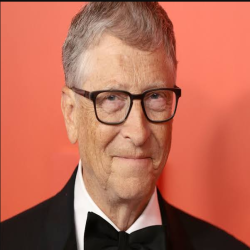
Bill Gates
Former CEO of Microsoft
| Date of Birth | : | 28 Oct, 1955 |
| Place of Birth | : | Seattle, WA |
| Profession | : | American Businessman, Philanthropist, CEO Of Microsoft |
| Nationality | : | American |
| Social Profiles | : |
Facebook
Twitter
Instagram
|
Bill Gates American computer programmer and entrepreneur who cofounded Microsoft Corporation, the world’s largest personal-computer software company.
Gates wrote his first software program at the age of 13. In high school he helped form a group of programmers who computerized their school’s payroll system and founded Traf-O-Data, a company that sold traffic-counting systems to local governments. In 1975 Gates, then a sophomore at Harvard University, joined his hometown friend Paul G.
Quotes
Total 25 Quotes
I choose a lazy person to do a hard job. Because a lazy person will find an easy way to do it.
I am not in competition with anyone but myself. My goal is to improve myself continuously.
Success today requires the agility and drive to constantly rethink, reinvigorate, react, and reinvent.
Vision without execution is daydreaming.
If you are born poor its not your mistake, But if you die poor its your mistake.
The computer was born to solve problems that did not exist before.
How you gather, manage, and use information will determine whether you win or lose.
It's fine to celebrate success but it is more important to heed the lessons of failure.
We're changing the world with technology.
I believe innovation is the most powerful force for change in the world.
